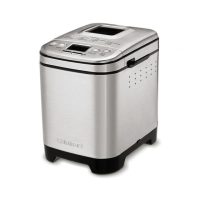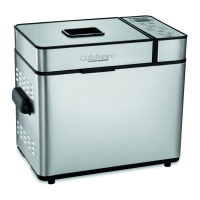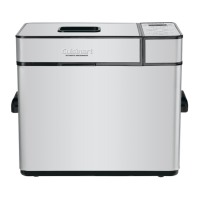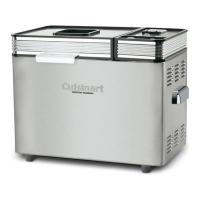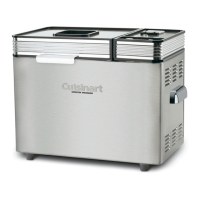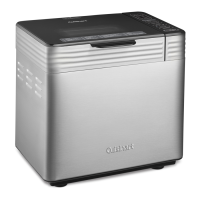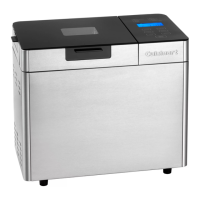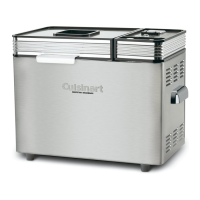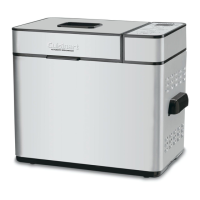11
MEASURING INGREDIENTS
Important Note: The MOST important rule of making bread:
Use exact measurements. This is the key to successful bread baking.
When measuring wet ingredients, use only liquid measuring cups with the cups/
ounces marked clearly on the side. After filling the measuring cup, place it on a
flat surface and view it at eye level to make sure the amount
of liquid is exact. Most recipes require liquids to be at room temperature.
When measuring dry ingredients, fill a dry measuring cup with a spoon
and then level off the measurement with the back of a knife or a spatula to make
sure the measurement is exact. Never use the cup to scoop the ingredients
directly from container (for example, flour). By scooping, you could add up to
one tablespoon (15 ml) of extra ingredients. Do not pack down, unless otherwise
noted.
LOADING INGREDIENTS
INTO THE BREAD PAN
Important Note: The SECOND MOST important rule of making bread:
Put the ingredients into the bread maker in the EXACT order given in
the recipe. This means, in most cases:
— FIRST, liquid ingredients
— SECOND, dry ingredients
— LAST, yeast – Yeast must be separate from wet ingredients and salt. Create
a small crater in dry ingredients using your finger or a spoon,
and place yeast within the crater. Make sure yeast is fresh.
Also, make sure ALL ingredients are at room temperature, unless otherwise
noted (that is, between 75˚F– 90˚F [23°C-32°C]). Temperatures too cool or too
warm can affect the way the bread rises and bakes. NOTE: Water should not be
hot, or it will affect rising.
Last, it is a good idea to start with fresh ingredients. Fresh flour and fresh yeast
are critical.
See Troubleshooting section (page 17) to learn more.
MEASUREMENT/CONVERSION CHART
INGREDIENT CONVERSION CHART
INGREDIENT VOLUME WEIGHT IN
GRAMS
WEIGHT IN
OUNCES
Egg (out of shell) 1 large 50 grams 1¾ ounce
Flour (All-Purpose, Bread
or Whole Wheat)
1 cup (237 ml) 126 grams 4½ ounces
Granulated Sugar 1 tablespoon (15 ml) 14 grams ½ ounce
Kosher Salt 1 teaspoon (5 ml) 6 grams
1
/
8
ounce
Unsalted Butter 1 tablespoon (15 ml) 14 grams ½ ounce
Water 1 cup (250 ml) 237 grams 8 ounces
Yeast, active dry 1 teaspoon (5 ml) 4 grams
1
/
8
ounce
1½
teaspoons (7.5 ml) = ½ tablespoon 8 tablespoons (120 ml) = ½ cup
3 teaspoons (15 ml) = 1 tablespoon 12 tablespoons (2.8 L) = ¾ cup
1½ teaspoons (7.5 ml) = 1½ teaspoons 16 tablespoons (3.7 L) = 1 cup
2 tablespoons (30 ml) = ¹⁄
8
cup ³⁄
8
cup (88 ml) = ¼ cup + 2 tablespoons
4 tablespoons (60 ml) = ¼ cup
5
⁄
8
cup (147 ml) = ½ cup + 2 tablespoons
5 tablespoons + 1 teaspoon
(75 ml) = ¹⁄
³
cup
= ¹⁄
³
cup
7
⁄
8
cup (207 ml) = ¾ cup + 2 tablespoon
Yeast/Baking Powder or Baking Soda
Dry Ingredients
Water or Liquids

